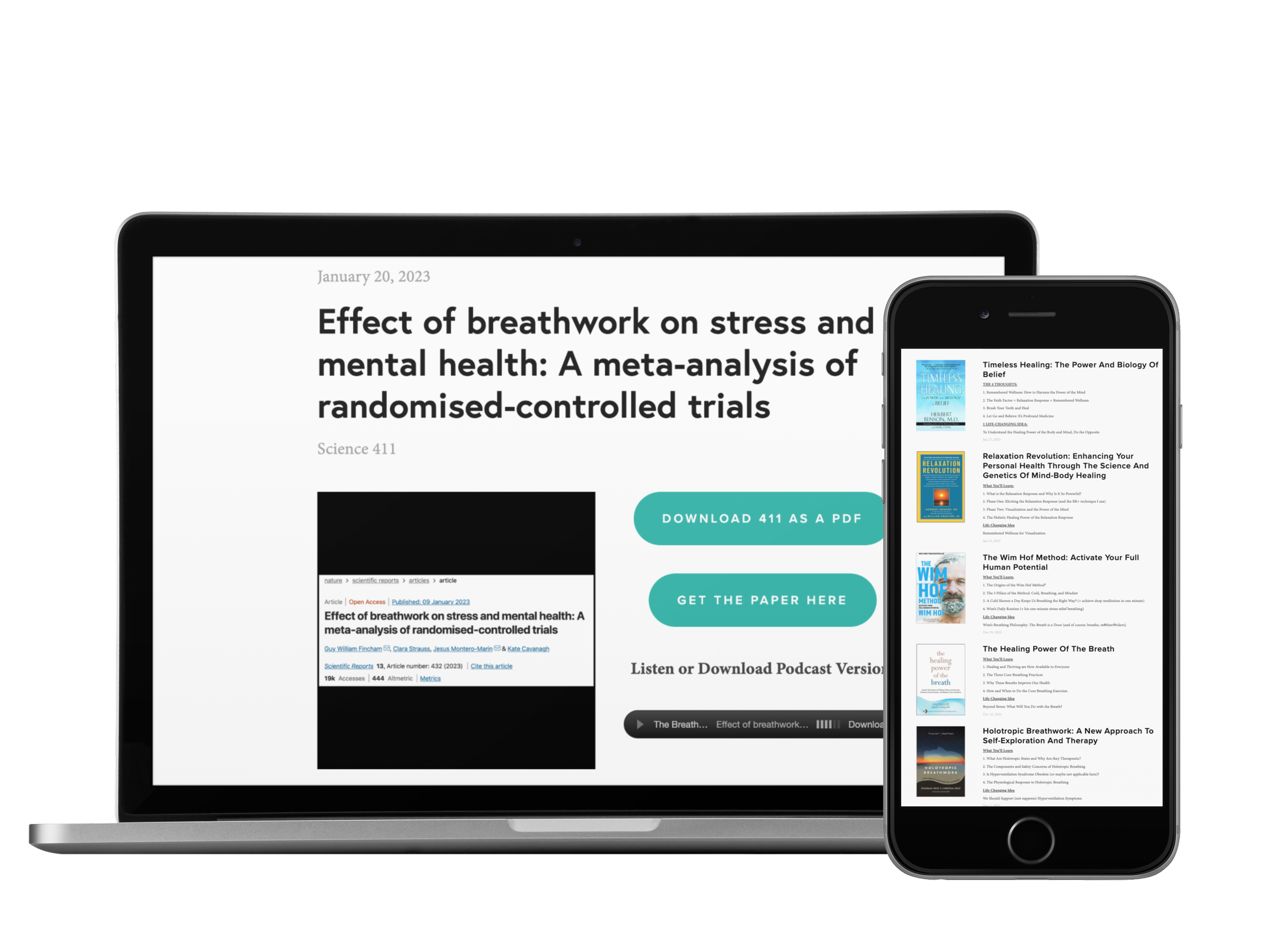Listen Instead of Reading
If you enjoy listening, you can subscribe to the audio version on Spotify, Apple Podcasts, and Audible so you don’t even have to look at the email 😊
Enjoy These Posts?
Reading Time: 1 min 42 sec
I hope the next 21’ish breaths are the most nourishing of your day.
4 THOUGHTS
1. The Great Synchrony Between Breath, Heart, and Brain
“We term this phenomenon the great 10 second synchrony between breath, heart and the brain.”
This 2019 study found that slow breathing, particularly at 6 breaths a minute (a 10-second cycle), rapidly synchronizes breath, heart, and brain rhythms, providing insight into how slow breathing exercises may enhance mental and emotional well-being 👏
***
P.S. As always, if you want to nerd out on the full review, check out the Breath Learning Center. We now have reviews of 51 papers, 45 books, and 552 daily messages to help you live better as a mixed mindful artist (and we’re just getting started 😊). We currently have 86 active members…I’d love for you to join us.
2. Get the Best of the Mind: Now Enough Robust Science
“There is now enough robust science to show that mastering the simple movements needed to control the rate, depth and route by which you get air into your body can become a handy tool to steer thoughts and feelings in useful ways. Mastering this range of bodily movements can allow us to dial into the workings of the brain and the rest of the body, change the settings of both and get the very best out of the mind.”
– Caroline Williams, Move
👏 👏 👏
3. Three Random Thoughts on Breathing
1. All life needs to move, and the lungs and airways are perfectly designed to optimize air motion in support of life.
2. A breath practice is a tool—but not a requirement—for a good life.
3. The most common mistake in breathing is using the nose, lungs, and diaphragm, but not the heart.
4. How to Not Get Upset when a Real Trial Comes
“Simply by maintaining a sense of humor and humility, we can teach the mind not to get upset even when a real trial comes.”
– Eknath Easwaran, Conquest of Mind
This one certainly passes the real-life test for me 😊. Give it a try this week and see how it goes.
1 Quote
“Joy seems to be the ‘natural’ state of a unified mind, and the more unified a mind is, the more joyful it is.””
1 Answer
Category: Brain Rhythms
Answer: These are brain electrical signals directly related to mental effort and brain excitability, which can become synchronized with respiration during slow breathing.
…
(Cue the Jeopardy! music.)
…
In good breath,
Nick Heath, T1D, PhD
“Breathing is the compound interest of health & wellness.”
Our Only Guide is Homesickness
“We have no one to guide us. Our only guide is our homesickness.”
– Herman Hesse
This perfectly captures the essence of becoming a Mixed Mindful Artist. We don’t focus on one method that worked for someone else; instead, we let our homesickness—our own intuition—guide us while using wisdom from great teachers and scientists to support that journey. If you’re ready to find your way home, get started today.
The Breathing App for Diabetes
This is the first program specifically made for people with diabetes to help manage their stress through breathing and mindfulness practices. In addition to the amazing program inside the app, we have some really neat things coming up, so sign up now!
Amazon Associate Disclosure
I’ve been recommending books for almost 6 years. Yet somehow, I just discovered that I could be an Amazon affiliate [face-palm]. In any case better late than never. Now, any Amazon link you click is an affiliate link. As an Amazon Associate, I earn from qualifying purchases. So, if you’d like to support my work, buying books through these links is helpful : )
* An asterisk by a quote indicates that I listened to this book on Audible. Therefore, the quotation might not be correct, but is my best attempt at reproducing the punctuation based on the narrator’s pace, tone, and pauses.



